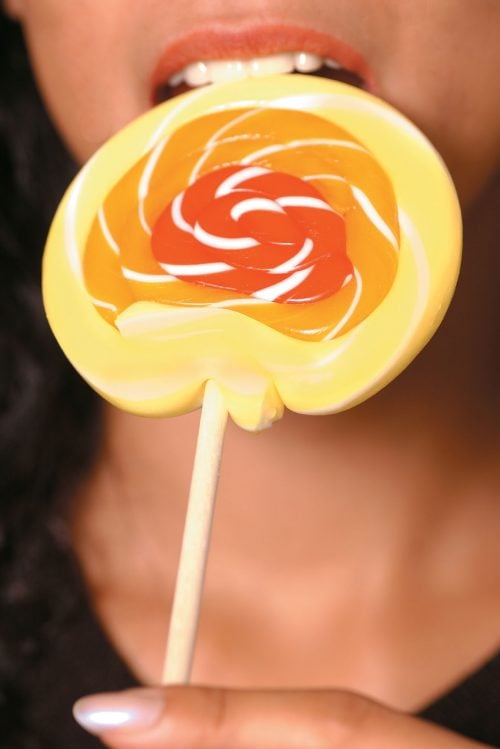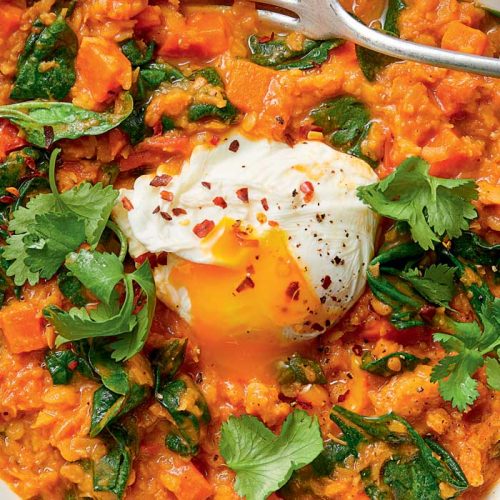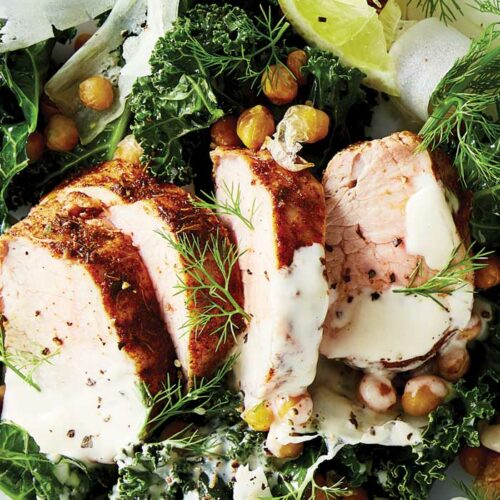
Here are some solutions for curbing that sweet tooth.
The theory goes that by consuming sugars we increase the levels of serotonin, a brain neurotransmitter that is known to elevate mood. However, although such food cravings are common, and a lot of research has been done, the data surrounding this theory is still inconsistent.
There is some evidence to support the view that sweet foods (as well as high-fat foods) are strongly preferred by women and that when these foods are consumed, the brain receives a message to produce opioids – chemical messengers that identify the taste as desirable. (So it's not really our fault!)
Natural preference
We are all born with an in-built preference for sweet foods. There are a number of theories as to why. One is that humans evolved a survival instinct (the sweet tooth) over two million years ago, in order to store their own energy reserves for times of scarcity. The human instinct was to consume readily available and accessible foods in large amounts, such as fruits in season. Fruits are high in natural sugars.
Today, most of us do not need to consume excess sweet foods for times of scarcity. Many people in the Western world consume an overabundance of sweet foods, which acts against keeping weight within a healthy range. This is because sugar is high in energy, but provides virtually no nutrients such as vitamins and minerals.
Compare the energy content of foods in the table below. All these foods have sugars in them and satisfy our cravings for sweet food, but there are substantial differences in their nutritional content.
| Food | Sugar content (g) | Energy (kJ) |
|---|---|---|
| 1 chunky bar Dairy Milk chocolate (51.3g) | 29 | 1075 |
| 1 banana (128g) | 29 | 551 |
| Apple juice, 250ml unsweetened | 25 | 435 |
| Madeira cake (1 slice, 44g) | 14 | 600 |
| 1 orange (128g) | 11 | 215 |
| 2 Gingernut biscuits | 10 | 440 |
| 1 gala apple (110g) | 10 | 215 |
| Golden syrup (2 teaspoons) | 10 | 165 |
| White sugar (2 teaspoons) | 9 | 140 |
Eating too much of a high-energy food (like those containing high levels of sugar) has the potential to indirectly increase the risk of heart disease and diabetes through the added energy, which contributes to obesity. There is also some evidence that high sugar intakes may raise the level of blood triglycerides (an independent risk factor for heart disease). So for people at greater risk of heart disease and diabetes, moderating sugar intake may be very beneficial even though sugar by itself has not been directly implicated in heart disease or diabetes.
How to reduce the sugar cravings
One theory suggests that eating foods during the day that are more satisfying will reduce hunger pangs, limiting the cravings for sweet food. Some foods have a higher 'satiety index'. The satiety index is a ranking of foods on their ability to satisfy hunger or how full a person feels after eating that food. The chemical components of a food contribute to the satiety index. Generally, the more fibre, protein and water a food contains, the higher it is in the satiety index. High satiety index foods include wholemeal bread, pasta, rice, fish, eggs, oatmeal porridge, baked beans and fruits.
More recent research has shown that eating low-glycaemic index (GI) foods can increase satiety. The GI is a method of rating carbohydrates in foods (between 1 and 100) on their effects on blood glucose levels in the body. Foods with a high GI (70 or more) contain carbohydrates that are digested and absorbed quickly, causing a rapid rise in blood glucose levels. Low- to medium-GI foods make you feel fuller so you will not be searching to satisfy the sweet cravings. These include dried fruits, peas, lentils, wholemeal bread, milk and basmati rice.
| If you're craving | Try instead… |
|---|---|
| Chocolate | A low-kilojoule chocolate drink (like Jarrah Chocolatté) (get your chocolate hit in a soothing low-energy drink) |
| Lollies | Sugar-free gum (especially good after a meal out when you can't brush your teeth) |
| Sweet drink | Flavoured water; fruit juice diluted 50/50 with water (sweetness with much fewer kilojoules) |
| Biscuits | Grainy bread with honey (a sweet hit that will make you feel fuller) |
| Ice cream | Low-energy ice cream, a pottle of yoghurt or frozen yoghurt (all have lots of calcium) or sorbet or make a smooth |
Tips to tame a sweet tooth
- Don't let yourself get too hungry – that means eat regularly. Don't skip meals, and if you need to snack between meals to keep yourself going, choose small-portioned, healthy snacks (such as low-fat yoghurt). Choose foods which make you feel more 'full', such as dishes that have a water, fibre and protein content like bean soups, stews and pasta dishes.
- Choose foods with a low or medium GI such as fruits, vegies, low-fat dairy and wholemeal breads.
- Limit sweet drinks to one small glass of juice per day.
- Don't use sweet foods as a distraction. If you're bored or stressed, deal with those things more directly.
- Don't stock foods that you know you find hard to resist.
- Don't forbid sweet foods altogether; you're liable to become more focused on something that is forbidden. Aim to satisfy your sweet tooth with small amounts less regularly and learn to savour it.
Healthy sweet desserts
Fruit and yoghurt are ideal for desserts. The fruit is sweet and contains fibre to help fill you up, as well as providing a range of vitamins and minerals, and yoghurt adds a creamy texture along with calcium for strong bones. Some people like the contrast of a tart yoghurt with particularly sweet fruit.
4 ways with fruit and yoghurt
- Fresh fruit salad made with pineapple, banana, oranges and melon with low-fat yoghurt mixed with honey.
- Dried fruit (eg apricots and figs) soaked in a little fruit juice or sweet wine, served with a dollop of Greek yoghurt.
- Pears or stone fruit poached in wine with a dollop of thick yoghurt.
- Frozen berries, banana and yoghurt blended together and frozen to make a fruity frozen dessert.
www.healthyfood.com










